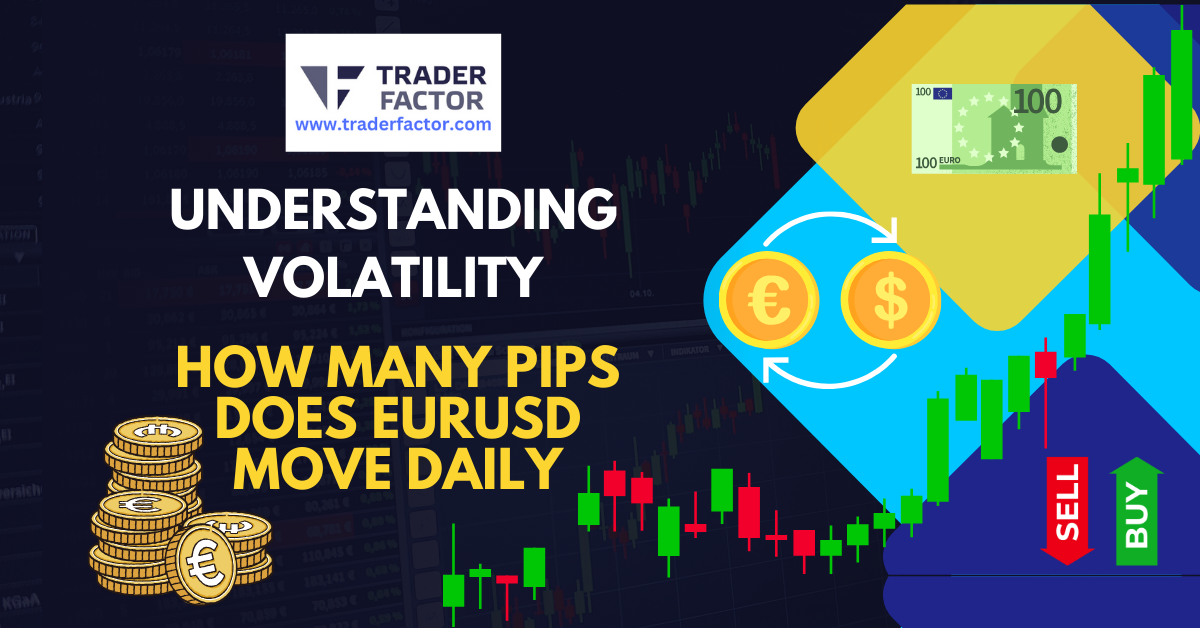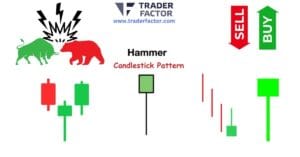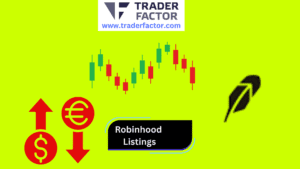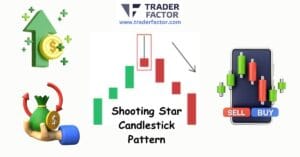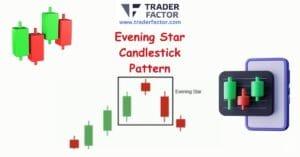EURUSD move. In the Forex trading business, tranquillity and chaos are often neighbours. Volatility, often called the degree of variation in trading prices over time, is crucial in determining risk, opportunity, and, ultimately, traders’ profit or loss. Among the myriad of currency pairs traded globally, the EURUSD holds a special significance, being one of the most actively traded pairs in the forex market.
Are you trying to predict the unpredictable and understand the daily volatility of the most traded pair, EUR/USD? How many pips does this pair move in a day, and why does it matter? By the end of this discussion, you’ll have a clearer understanding of the concept of ‘pips’ and the critical role it plays in your Forex trading strategy.
Hence, you will be able to navigate the turbulent waters of Forex trading and become a little less daunting and, perhaps, more profitable. Ready to unlock the secrets? Let’s get started.
Table of Contents
ToggleForex Market Volatility
To truly excel in forex trading, you must grasp the concept of market volatility, as it greatly impacts the daily movement and price fluctuations of currency pairs. Market volatility refers to the speed at which the price of an asset, in this case, the EURUSD, increases or decreases for a set of returns. It measures risk and uncertainty; the higher the volatility, the riskier the investment.
Platforms like EURUSD Tradingview provide real-time data and help traders visualize market volatility. Observing the EURUSD — Tradingview charts, you’ll notice that volatility isn’t static. It fluctuates over time and is particularly influenced by geopolitical events and economic data releases.

The best time to trade EURUSD typically corresponds with the highest volatility periods. These are usually around the London market opening hours and during major economic announcements.
To calculate potential profits or losses, you can use a EURUSD pip calculator, which considers the rate fluctuations for your trades. Remember, in forex trading, understanding and navigating volatility is just as important as predicting the market direction.
Why Volatility in Forex Trading

While understanding and navigating volatility is vital, it’s the direct impact of volatility on your forex trades that drives home its importance. Volatility can significantly affect your trading strategy, your potential for profit, and the risk you’re willing to take.
Consider the pair EURUSD vs XAUUSD. EURUSD, a pair of major currencies, typically has lower volatility than XAUUSD, which pairs a major currency with a precious metal. This difference in volatility can lead to distinct trading strategies. For example, during periods of high volatility, you might prefer trading EURUSD futures, as they offer a way to hedge against unpredictable swings.
Volatility can also affect your decision on when to enter or exit a trade. High volatility periods may present you with more opportunities, but they also come with increased risk. On the other hand, lower volatility can provide steadier, albeit smaller, returns.
Assessing and Managing Volatility
Navigating the turbulent seas of market volatility might seem daunting, but with the right tools and strategies, you can turn these waves of uncertainty to your advantage. Assessing volatility involves analyzing the Average True Range (ATR), which measures the degree of price volatility. By understanding ATR, you can anticipate potential price movements and make informed trading decisions.

Managing volatility, on the other hand, requires a robust risk management strategy. This includes setting stop-loss orders to limit potential losses, diversifying your portfolio, and staying informed about market trends and economic news.
To help you with this, let’s look at a simple table showing how to assess and manage volatility:
| Steps | Assessing Volatility | Managing Volatility |
| 1 | Analyze Average True Range (ATR) | Set Stop-Loss Orders |
| 2 | Anticipate Potential Price Movements | Diversify Your Portfolio |
| 3 | Make Informed Trading Decisions | Stay Informed |
| 4 | Monitor Market Trends and Economic News | Develop a Risk Management Strategy |
Trading Strategies for Volatile Markets
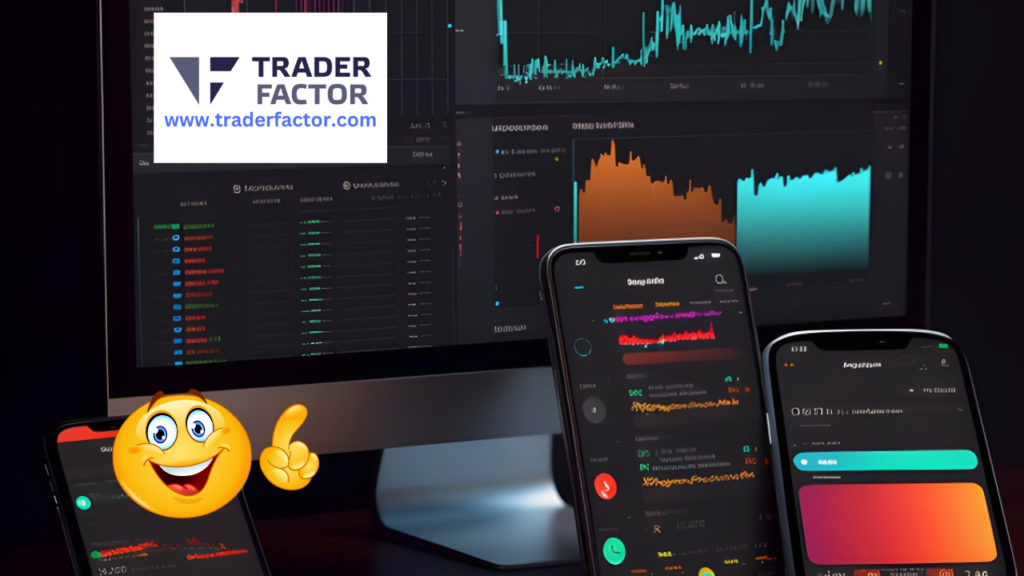
Trading strategies must be dynamic and flexible in volatile markets to adapt to rapid price swings. The more volatile the market, the greater the number of trading opportunities. However, with greater profit potential also comes greater risk. This delicate balance needs careful management.
The first step is to stay informed. Keep up-to-date with economic and political events that might cause volatility. This will help you anticipate possible market movements and plan your trades accordingly.
Next, utilize technical analysis tools. These can help identify potential trading opportunities and manage risk. Tools like the Average True Range (ATR) can provide insights into a market’s volatility and help you decide which trades to take.
Understanding the movements of major currency pairs is also crucial. Knowing what causes price changes and how these pairs typically behave can guide your trading decisions.
Average Daily Movement of EUR/USD
Just as comprehending the movements of major currency pairs is vital, it’s equally important to understand the average daily movement of specific pairs like EUR/USD. This average daily movement, volatility, can significantly impact your trading strategy and potential profits.
Simply put, the daily movement of a currency pair, like the EUR/USD, refers to the number of pips the pair moves in a day. This may vary depending on economic news, market sentiment, and geopolitical events.

Now, let’s dig into some stats. Here’s a brief snapshot of the average daily range for EUR/USD:
| Year | Average Daily Range (Pips) |
| 2017 | 87.6 |
| 2018 | 90.2 |
| 2019 | 74.1 |
| 2020 | 92.7 |
As you can see, the average daily movement for EUR/USD tends to fluctuate year by year. It’s crucial to remember that past performance doesn’t guarantee future results, so always stay updated on market conditions when trading this pair.
Influence of Sessions on EUR/USD Volatility
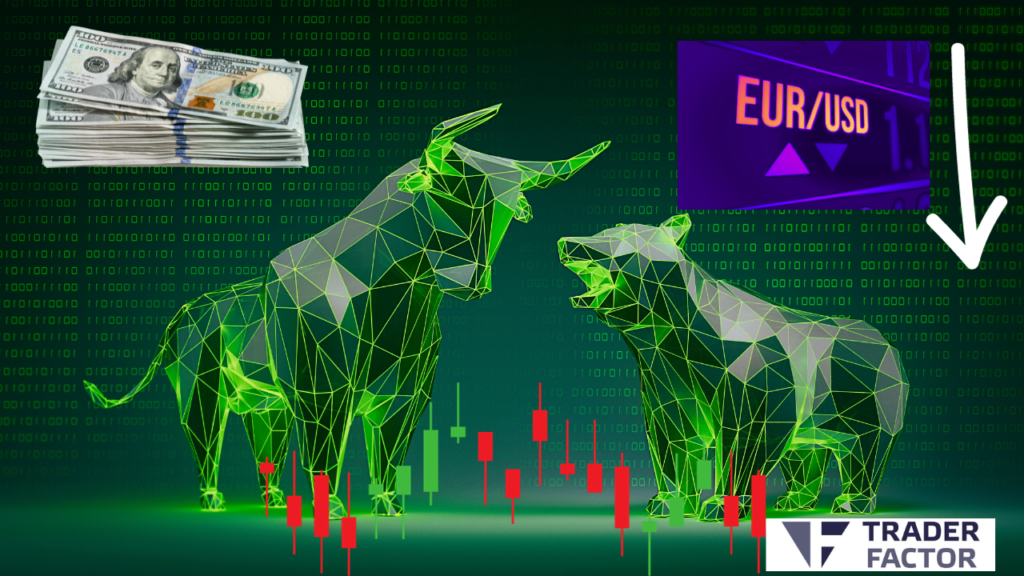
To maximize your forex trading profits, it’s crucial to understand how different trading sessions can affect the volatility of the EUR/USD pair. The Forex market operates 24 hours a day and is divided into four major sessions: the Sydney, Tokyo, London, and New York sessions.
The greatest volatility usually occurs during the London session (3:00 am—12:00 pm EST), followed by the New York session (8:00 am—5:00 pm EST), which corresponds to the working hours of the world’s major financial markets.
EURUSD move
The overlap between the London and New York sessions, from 8:00 am to 12:00 pm EST, represents the peak trading hours for the EUR/USD pair. During this period, you’ll notice a significant increase in volatility as traders from both continents are active, leading to higher trading volumes.
However, remember that increased volatility also means increased risk. Therefore, it’s essential to have solid risk management strategies in place when trading during these volatile periods. Furthermore, always stay updated on economic news from Europe and the U.S., as these can significantly influence the EUR/USD pair’s volatility.

Major Currency Pairs and Pip Movements
While understanding the impact of trading sessions on the EUR/USD pair is crucial, it’s equally important to grasp the concept of major currency pairs and their daily pip movements. These pairs include the EUR/USD, GBP/USD, USD/JPY, AUD/USD, and USD/CHF. You’ll often find that these pairs have a higher daily pip movement, presenting more profit opportunities.
In Forex trading, a ‘pip’ is a unit of measure for currency movement and is the fourth decimal point in most currency pairs. For instance, if EUR/USD moves from 1.2050 to 1.2051, that .0001 USD rise in value is one pip. A pip is thus the smallest amount a currency can move.
Knowing the average daily pip movement of a currency pair helps you assess its volatility. For example, the EUR/USD pair may move around 70 to 100 pips daily. However, this can vary due to economic data releases, central bank policy changes, or geopolitical events. Recognizing these pip movements aids in developing trading strategies and managing risk more effectively.
Factors Influencing Currency Pair Movement

Understanding what influences the movement of currency pairs is crucial to making informed trading decisions. You’ll find that several factors can sway these movements.
Economic indicators like GDP, employment data, and inflation rates are key. When a country’s economy is doing well, its currency often strengthens. Conversely, if the economy is underperforming, its currency usually weakens.
Central bank policies also play a significant role. Interest rate decisions, for instance, can trigger market volatility. Higher rates often attract foreign capital, boosting the currency’s value, while lower rates can have the opposite effect.
Political stability influences currency pair movement, too. Uncertainty or unrest can lead to a currency’s depreciation, while political stability can strengthen a currency.
Market sentiment, driven by traders’ perceptions of the market, can cause currency fluctuations. If traders believe a currency’s value will go up, they’ll buy, pushing the price higher.
Lastly, global events, including natural disasters or pandemics, can impact currency pair movement. These events can cause significant economic disruption, influencing currency values.
Frequently Asked Questions
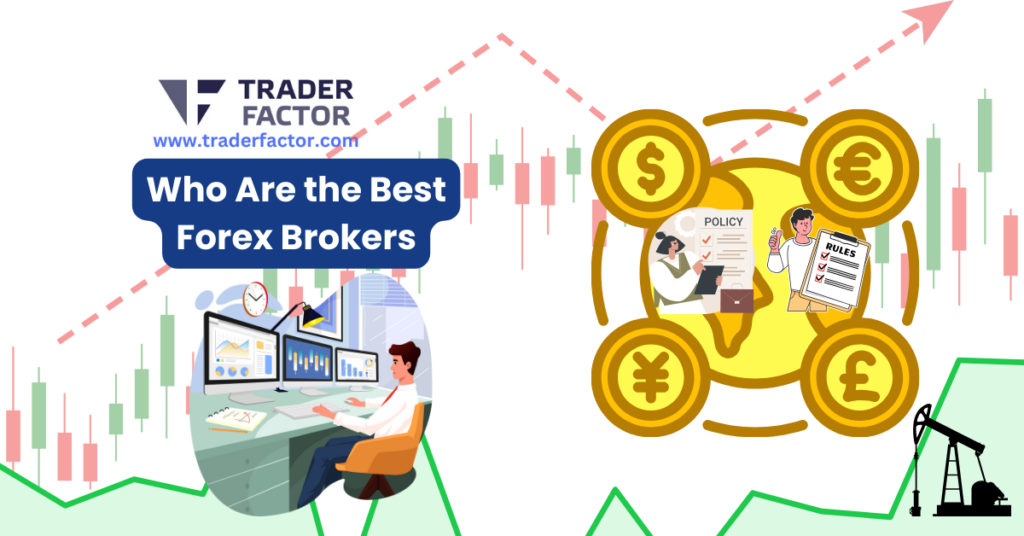
Who Are the Best Forex Brokers?
Explore these reputable and comprehensively regulated forex brokers, each tailored for different trading styles:
OneRoyal stands out with its engaging social trading platform. It offers an array of educational resources and a handy demo account for practice. Opt for a maximum leverage of 1:1000 and seize the opportunity for a 100% Deposit Bonus. With an OneRoyal account, access innovative trading tools including CopyTrading with Hoko Cloud, Trading Central, MT4 Accelerator, VPS Hosting, and Trading Calculators. Regulation comes from AFSL-ASIC, CySEC, VFSC, and FSA, ensuring a secure trading environment.

IronFx offers a streamlined platform complemented by a robust risk management tool to enhance control over trading risks. Choose up to 1:1000 leverage and enjoy a 100% Deposit Booster. Live account holders benefit from TradeCopier, Trading Central, AutoTrade, and VPS Hosting. IronFx’s credibility is backed by regulation from FCA, CySEC, FSCA, and BMA.

Admirals distinguishes itself with superior customer support and an extensive suite of educational resources. Leverage is available up to 1:500, with VIP account conditions and CashBack on trades. Tools for live account holders include MetaTrader Supreme Edition, StereoTrader, Trading Central, Premium Analytics, and VPS Hosting. Admirals is regulated by authorities such as FCA, CySEC, AFSL-ASIC, JSC, CIPC, and CMA, ensuring a reliable trading experience.

ActivTrades features a user-friendly platform, vast educational materials, and versatile demo accounts for all trader levels. Professional traders can access leverage up to 1:400, while retail traders have a maximum of 1:200. This broker offers CashBack and interest on free margin funds. Trade with TradingView on the ActivTrader platform. ActivTrades is regulated by FCA, CSSF, CMVM, SCB, and BACEN, affirming its trustworthiness.

EightCap concludes our list with an intuitive platform, exceptional educational materials, and effective customer support. Enjoy leverage up to 1:500 and a 10% deposit bonus. Access trading tools like TradingView, Crypto Crusher, Capitalise AI, FlashTrader, Acuity, and VPS Hosting with EightCap Forex Broker. Regulated by AFSL-ASIC and SCB, EightCap ensures a secure and enriching trading experience.

Conclusion
In conclusion, understanding volatility and the daily pip movement of the EUR/USD pair is key in forex trading. It’s crucial to assess and manage volatility, develop strategies for volatile markets, and comprehend the influences on currency pair movements. With this knowledge, you can make informed trading decisions and maximize your profits. So, dive into the dynamic world of forex and leverage the power of volatility to your advantage.
Disclaimer:
All information has been prepared by TraderFactor or partners. The information does not contain a record of TraderFactor or partner’s prices or an offer of or solicitation for a transaction in any financial instrument. No representation or warranty is given as to the accuracy or completeness of this information. Any material provided does not have regard to the specific investment objective and financial situation of any person who may read it. Past performance is not a reliable indicator of future performance.

